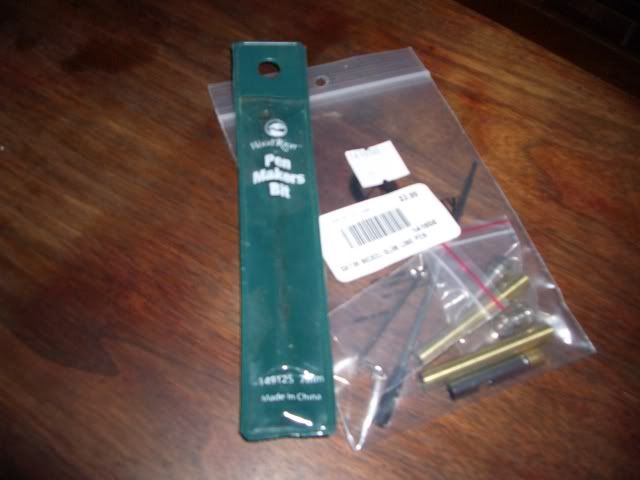As for the CA finishing ... here's a copy/paste of an old post I made a while back ...
http://www.ncwoodworker.net/forums/f32/ca-finishing-16549/?highlight=finish. TRUST ME ... if you do this method, it will work! A buddy of mine didn't heed the advice and just last week finally thru int he towel after messing up about 10 pens. He came over and said "Okay, what's the deal". After ONE demo, he did 5 perfect CA finishes in their glossy glory! (Tom if you read this, speak up!)
I had a heck of a time with this ... but after watching ONE demo with North Carolina Woodworker-member Chris Mathes at a Charlotte Woodworkers meeting I saw the light ... and have since gotten 100% of my CA-finished pens to turn out beautifully.
Personally, I was overthinking the process and far to concerned about the glue drying "instantly". In the end, two coats is usually enough and finished up through 12000 MicroMesh and a little automotive plastic polish turns up a beautiful, glossy finish.
Here's the tips I can provide from Chris' instruction:
- Use Medium thickness CA glue
- (OPTIONAL) Make your own bushings for use when applying the CA finish. The bushings are made of phoelinic (??) plastic (available at WC). This keeps the blanks from sticking too to the bushings, as the glue doesn't adhere well to the plastic)
- Tear the finger tip off a rubber glove (or use one of the plastic baggies that came in the pen kit to protect the metal pieces) and place it on your finger tip to apply the finish.
- A little goes a far way. Don't put too much CA on each coat!
- Get your finger under the blank, squirt on some CA and move your finger quickly back and forth length-wise to thin and smooth out the glue. Do this for about 10 seconds on each side, give or take, then get your hand off that blank.
- No need to sand yet, apply a second coat the same way.
- A quick squirt of accelerator wouldn't hurt between coats.
- Now start at the lowest MicroMesh pad and work all the way up. Use the first pad to smooth (maybe 10 seconds on each side), then polish with rest (maybe 5 seconds on each side). Use the sandpaper with water!
- (OPTIONAL) A dab of automotive Plastic Polish (don't buy the stuff at the woodworking store, just go to Pep Boys or Advance Auto Parts and pick up some for a quarter the price). Dab that on and polish the final mile.
- If you fear the blanks are stuck to the bushings, tap it lightly with the skew nose-first or parting tool to break the bond.
- Take the glossy blanks off the mandrel. Rub the ends gently on some 150 grit sandpaper to remove any CA buildup on the ends.
One note I forgot to mention above, use the sandpaper WET! Once you have the CA coats on, treat it like plastic. NO MORE DRY SANDING. Keep a bowl of clean water close and keep that sandpaper WET!
Now .... you have a perfectly finish with superglue!
Before I learned this method, I tried everything ... BLO/CA, thin CA, ...anything. This is the only method I've had success with. Good luck!

